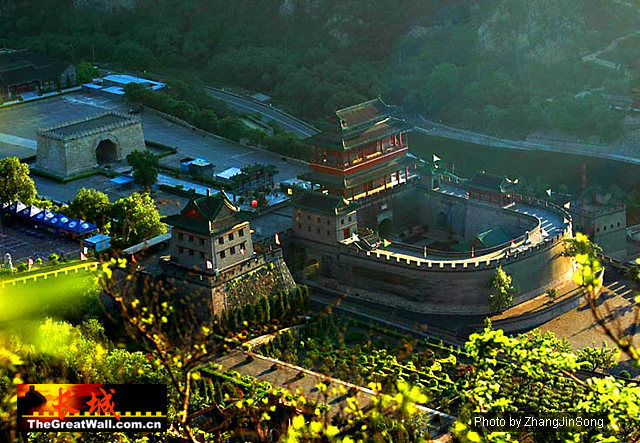|
|
 |
| |
| Juyongguan Great Wall: A brief
introduction
|
|
The Juyongguan section of the Great Wall.

The JuYongGuan Great Wall is the nearest section of the Great Wall to Beijing - a little nearer than BaDaLing that it connects to; both these sections of Great Wall protect the same natural pass through the mountains through which now passes the Badaling Expressway and a railway line. JuYongGuan rises steeply each side of a fortrified gate. There is a temple and other attractions closed by. JuYongGuan Great Wall also features some life-size Terracotta Warriors. JuYongGuan Great Wall is a pass ('guan' means 'mountain pass') through the mountains located in an 18 km long valley named GuanGou which is in ChangPing County, more than 50 km from Beijing City. JuYongGuan is one of the three greatest passes of the Great Wall of China. The other two are JiaYuGuan Pass and ShanHaiGuan Pass. JuYongGuan had many different names in the past; however, the name JuYongGuan Pass was used by more than 3 dynasties. It was first used in the Qin Dynasty when Emperor QinShiHuang gave the orders to build the Great Wall of China. Actually, JuYongGuan Great Wall actually has 2 passes, one at the south and one at the north. The south one is called "Nan Pass" (what we now call JuYongGuan) and the north one is called BaDaLing.
The Yuntai (Cloud Platform), located in the center of the pass, is actually the white marble foundation of three white pagodas. Unfortunately, the pagodas were ruined at the end of the Yuan Dynasty (1271-1368), leaving only the rectangular foundation intact. This foundation is 9.5 meters high (31.2 feet) and has a south-to-north arch. Well-known stone carvings are on the walls and the roof of this arch. The roof is covered with the patterns of stramonium and five Buddha figures. On the walls, ten lifelike, large figures of Buddha are surrounded by many small ones as well as patterns of flowers. Four Heavenly Kings (four gods in Chinese legend who guard the country in four directions) are also engraved here. Among them, words praising the construction of the pagodas and the Mantras of the Dharani Sutra are carved out in six languages, two of which are Sanskrit and Tibetan. Owing to its historical value and elegant crafting, the Yuntai was included on the list of World Cultural Heritage in 1987.
Peach blossoms in spring, and maple leaves in autumn, make the Juyongguan Great Wall more enchanting. A visit to this area gives visitors a perspective, different from other sections of the Great Wall.
(Photograph : Zhang JinSong) |
| |
|
|

